
How to Use Arduino Nano ESP32: Examples, Pinouts, and Specs
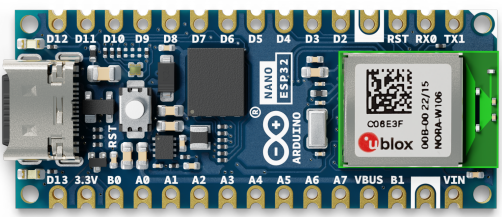
 Design with Arduino Nano ESP32 in Cirkit Designer
Design with Arduino Nano ESP32 in Cirkit DesignerIntroduction
The Arduino Nano ESP32 is a compact and versatile microcontroller board developed by Arduino, featuring the powerful ESP32-S3 microcontroller. This board combines the ease of use of the Arduino ecosystem with the advanced wireless capabilities of the ESP32, including Wi-Fi and Bluetooth Low Energy (BLE). Its small form factor makes it ideal for IoT applications, wearable devices, and other projects requiring wireless connectivity.
Explore Projects Built with Arduino Nano ESP32
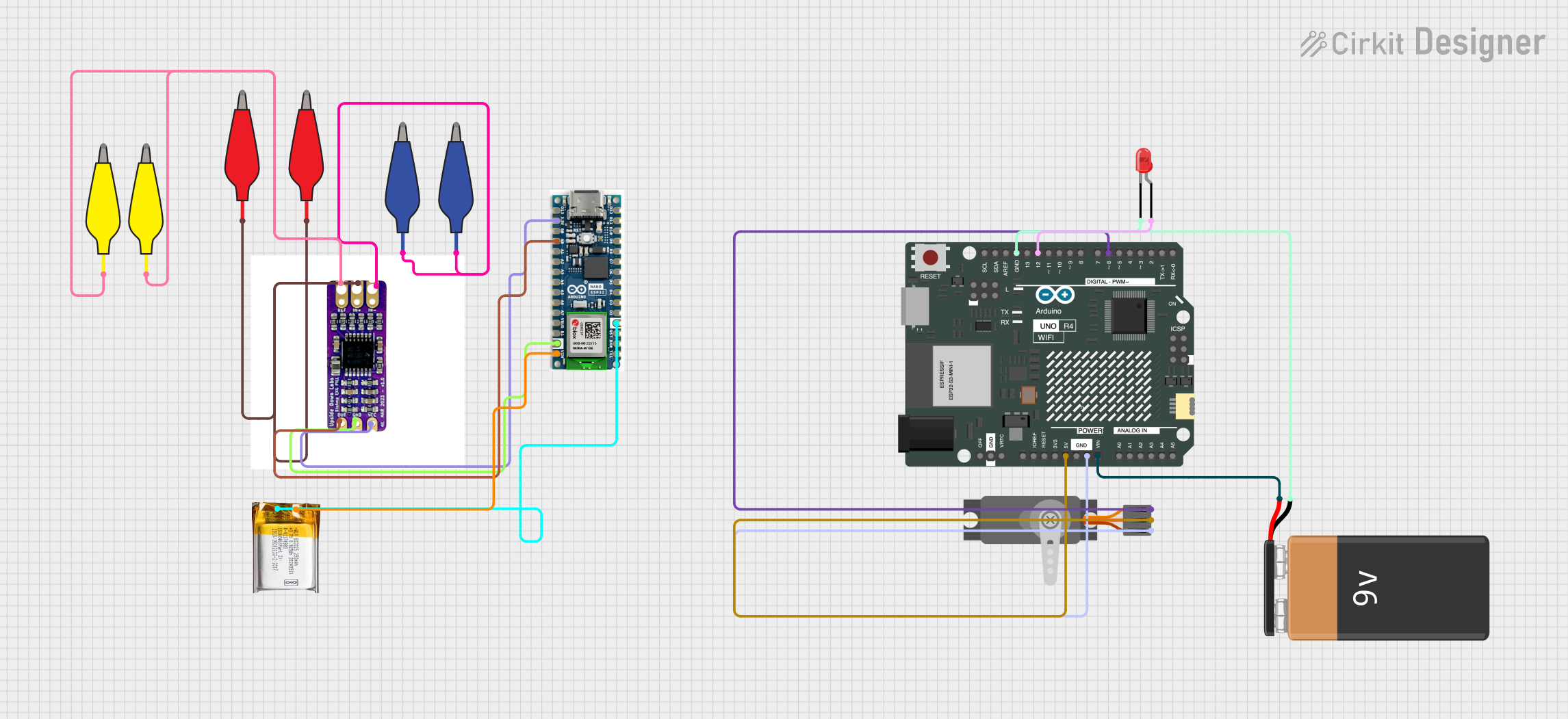
 Open Project in Cirkit Designer
Open Project in Cirkit Designer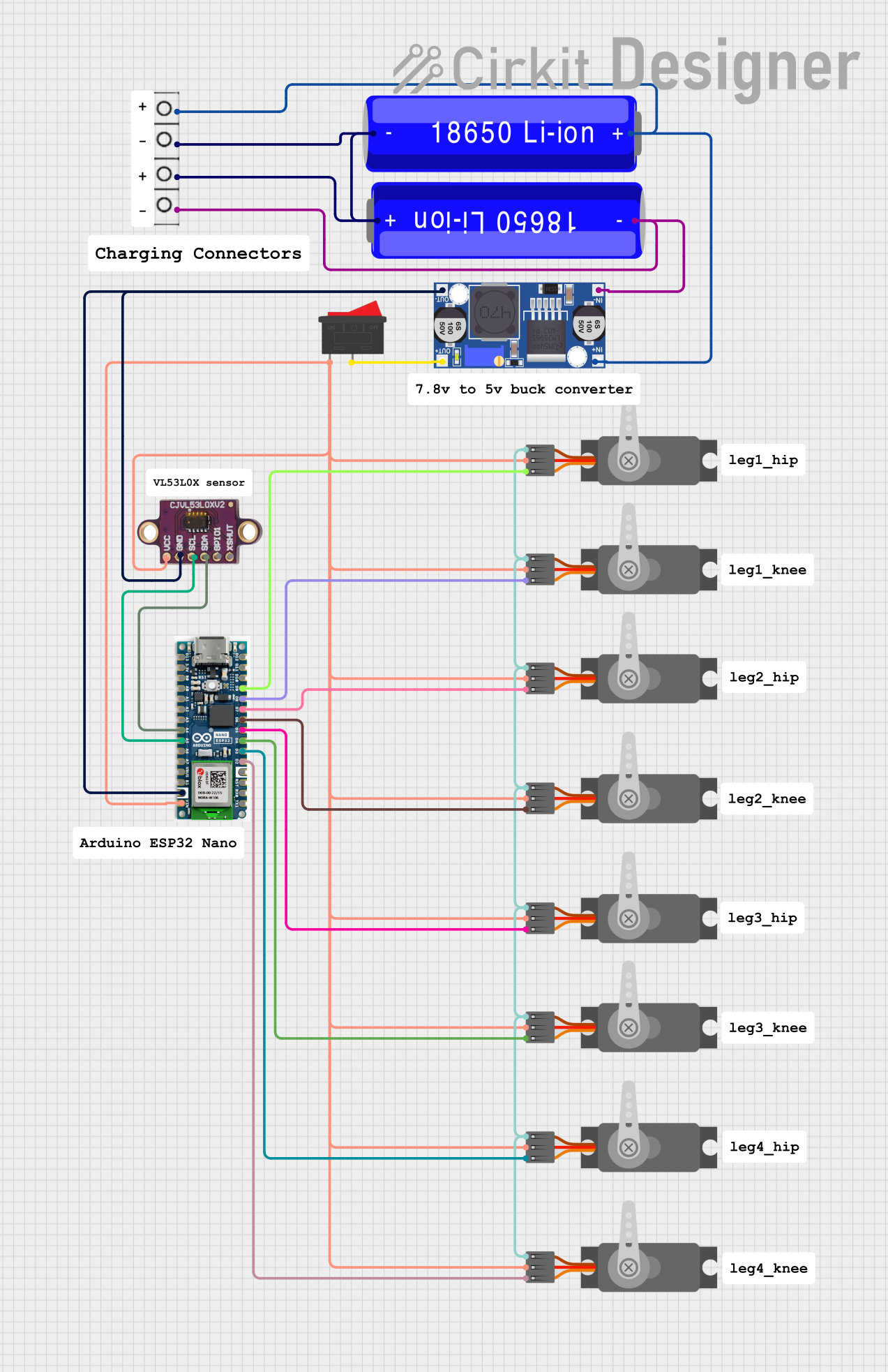
 Open Project in Cirkit Designer
Open Project in Cirkit Designer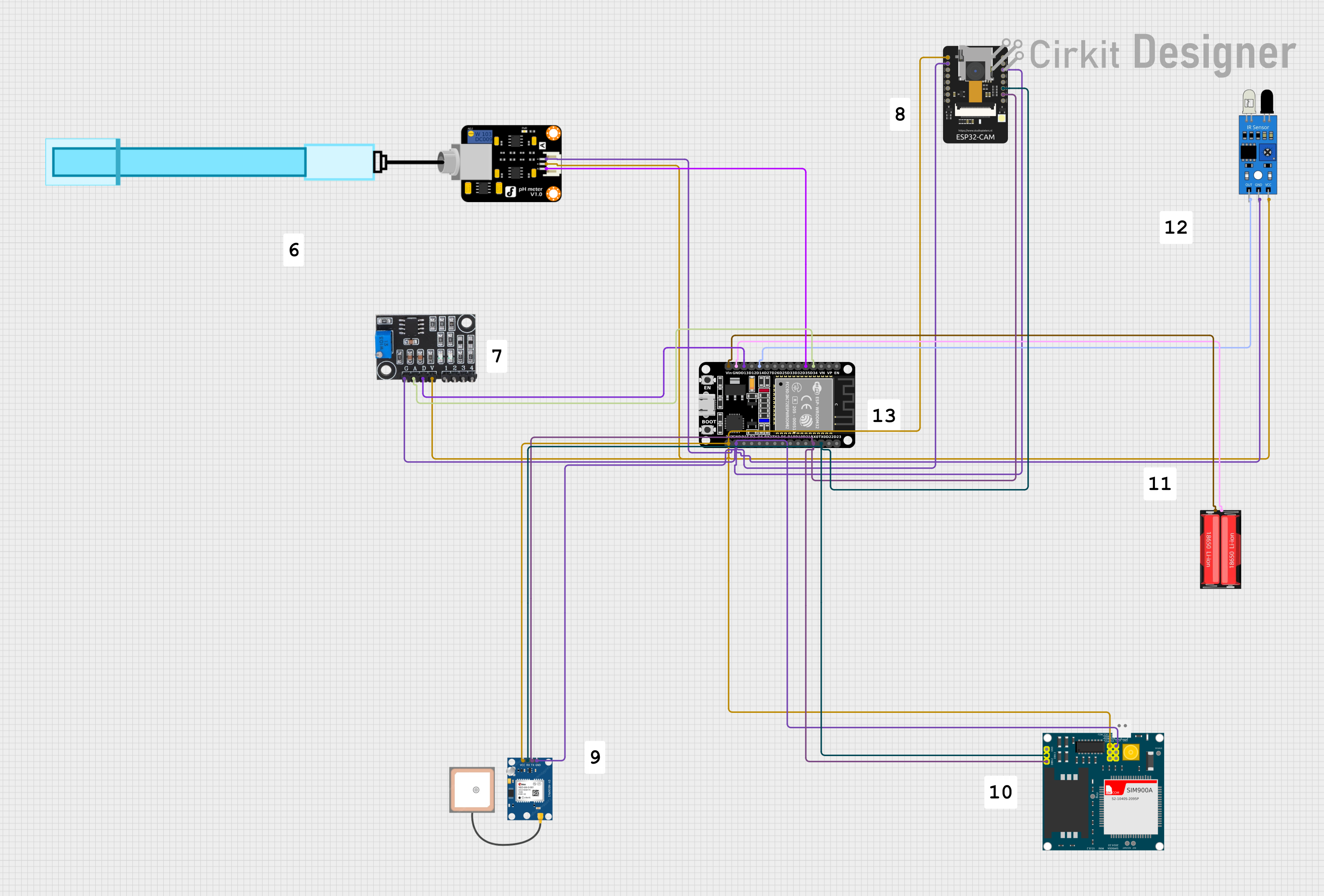
 Open Project in Cirkit Designer
Open Project in Cirkit Designer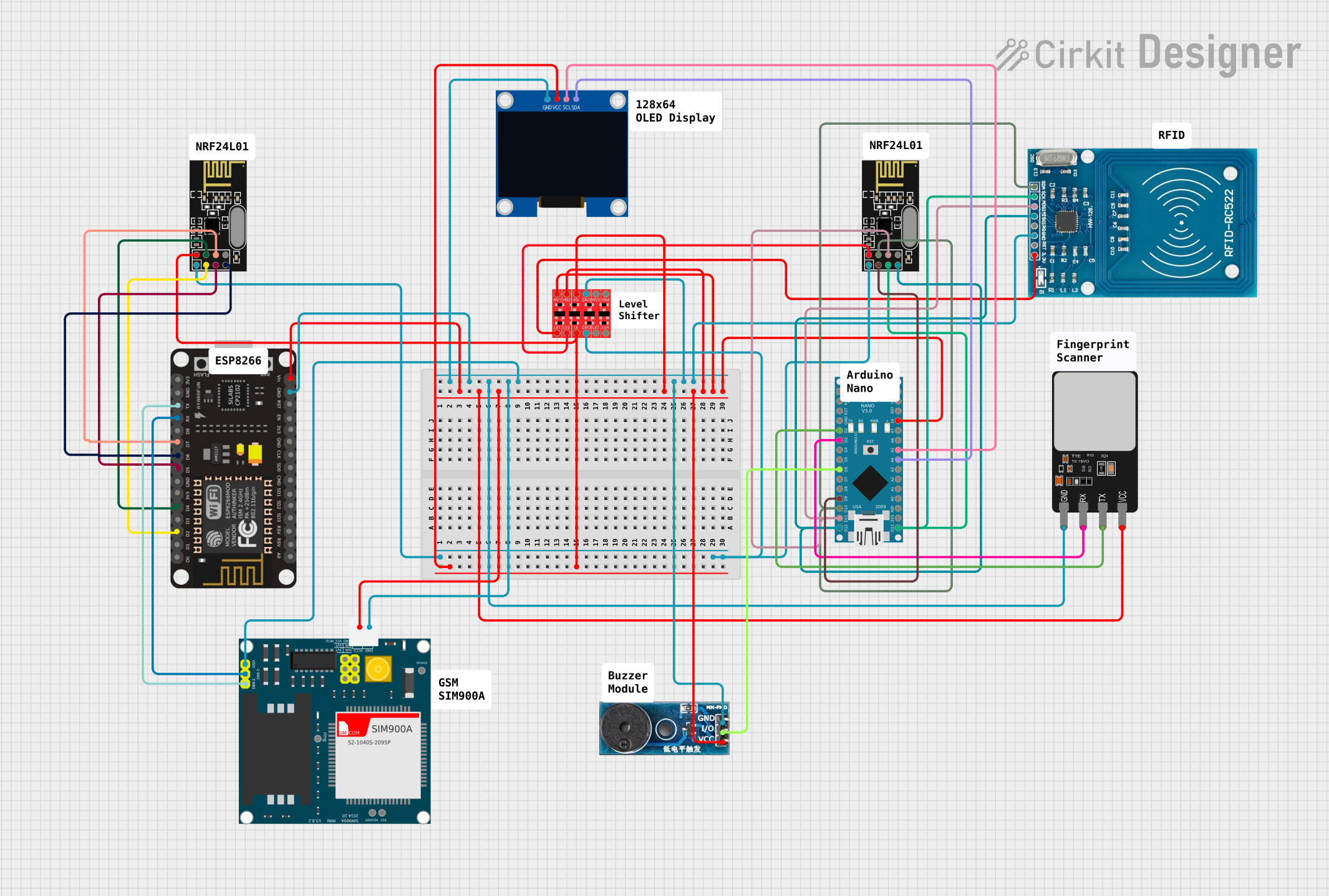
 Open Project in Cirkit Designer
Open Project in Cirkit DesignerExplore Projects Built with Arduino Nano ESP32

 Open Project in Cirkit Designer
Open Project in Cirkit Designer
 Open Project in Cirkit Designer
Open Project in Cirkit Designer
 Open Project in Cirkit Designer
Open Project in Cirkit Designer
 Open Project in Cirkit Designer
Open Project in Cirkit DesignerCommon Applications and Use Cases
- Internet of Things (IoT) devices
- Home automation systems
- Wireless sensor networks
- Wearable technology
- Robotics and automation
- Prototyping and educational projects
Technical Specifications
The following table outlines the key technical details of the Arduino Nano ESP32:
| Specification | Details |
|---|---|
| Microcontroller | ESP32-S3 (Xtensa® 32-bit LX7 dual-core processor) |
| Operating Voltage | 3.3V |
| Input Voltage (VIN) | 5V (via USB-C or VIN pin) |
| Digital I/O Pins | 14 (including PWM support) |
| Analog Input Pins | 8 |
| Analog Output Pins | 1 (DAC) |
| Flash Memory | 8MB |
| SRAM | 512KB |
| Wireless Connectivity | Wi-Fi 802.11 b/g/n, Bluetooth 5.0 (LE) |
| USB Interface | USB-C (for programming and power) |
| Dimensions | 45 x 18 mm |
| Operating Temperature | -40°C to 85°C |
Pin Configuration and Descriptions
The Arduino Nano ESP32 has a total of 30 pins. Below is the pinout description:
| Pin | Name | Type | Description |
|---|---|---|---|
| 1 | VIN | Power | Input voltage (5V) for powering the board. |
| 2 | GND | Power | Ground connection. |
| 3 | 3V3 | Power | 3.3V output from the onboard regulator. |
| 4-11 | D0-D7 | Digital I/O | General-purpose digital pins (PWM supported). |
| 12-13 | RX, TX | UART | Serial communication pins. |
| 14-21 | A0-A7 | Analog Input | Analog input pins (12-bit ADC). |
| 22 | DAC1 | Analog Output | Digital-to-Analog Converter (DAC) output. |
| 23 | SDA | I2C | I2C data line. |
| 24 | SCL | I2C | I2C clock line. |
| 25 | SCK | SPI | SPI clock line. |
| 26 | MISO | SPI | SPI Master-In-Slave-Out line. |
| 27 | MOSI | SPI | SPI Master-Out-Slave-In line. |
| 28 | EN | Power | Enable pin to activate the board. |
| 29 | RST | Reset | Reset pin to restart the board. |
| 30 | USB-C | USB | USB-C port for programming and power. |
Usage Instructions
How to Use the Arduino Nano ESP32 in a Circuit
Powering the Board:
- Use the USB-C port to power the board (5V input).
- Alternatively, supply 5V to the VIN pin and connect GND to the ground of your circuit.
Programming the Board:
- Install the Arduino IDE and add the ESP32 board package via the Board Manager.
- Select "Arduino Nano ESP32" as the board type.
- Connect the board to your computer using a USB-C cable and upload your code.
Connecting Peripherals:
- Use the digital I/O pins (D0-D7) for controlling LEDs, relays, or other digital devices.
- Use the analog input pins (A0-A7) to read sensor data.
- Utilize the I2C (SDA, SCL) or SPI (SCK, MISO, MOSI) pins for communication with external modules.
Important Considerations and Best Practices
- Ensure the input voltage does not exceed 5V to avoid damaging the board.
- Use level shifters when interfacing with 5V logic devices, as the board operates at 3.3V.
- Avoid drawing excessive current from the 3.3V pin, as it is limited by the onboard regulator.
- Use proper decoupling capacitors when connecting sensors or modules to reduce noise.
Example Code: Blinking an LED
The following example demonstrates how to blink an LED connected to pin D2:
// Define the pin where the LED is connected
const int ledPin = 2;
void setup() {
// Set the LED pin as an output
pinMode(ledPin, OUTPUT);
}
void loop() {
// Turn the LED on
digitalWrite(ledPin, HIGH);
delay(1000); // Wait for 1 second
// Turn the LED off
digitalWrite(ledPin, LOW);
delay(1000); // Wait for 1 second
}
Example Code: Connecting to Wi-Fi
The following example demonstrates how to connect the Arduino Nano ESP32 to a Wi-Fi network:
#include <WiFi.h>
// Replace with your network credentials
const char* ssid = "Your_SSID";
const char* password = "Your_PASSWORD";
void setup() {
Serial.begin(115200); // Start serial communication
WiFi.begin(ssid, password); // Connect to Wi-Fi
// Wait for the connection to establish
while (WiFi.status() != WL_CONNECTED) {
delay(500);
Serial.print(".");
}
Serial.println("\nWi-Fi connected!");
Serial.print("IP Address: ");
Serial.println(WiFi.localIP()); // Print the IP address
}
void loop() {
// Add your main code here
}
Troubleshooting and FAQs
Common Issues and Solutions
The board is not detected by the Arduino IDE:
- Ensure the correct USB driver is installed for the ESP32.
- Check that the USB-C cable supports data transfer (some cables are power-only).
- Select the correct COM port in the Arduino IDE.
Wi-Fi connection fails:
- Double-check the SSID and password for your network.
- Ensure the Wi-Fi network is within range and not using unsupported security protocols.
Code upload fails:
- Press and hold the "BOOT" button on the board while uploading the code.
- Verify that the correct board and port are selected in the Arduino IDE.
Board resets unexpectedly:
- Check for power supply issues or excessive current draw from connected peripherals.
- Ensure proper grounding in your circuit.
FAQs
Q: Can I use the Arduino Nano ESP32 with 5V sensors?
A: Yes, but you will need level shifters to safely interface 5V sensors with the 3.3V logic of the board.
Q: Does the board support OTA (Over-The-Air) updates?
A: Yes, the ESP32-S3 supports OTA updates, which can be implemented using the Arduino IDE or other tools.
Q: What is the maximum current output of the 3.3V pin?
A: The 3.3V pin can supply up to 500mA, depending on the input power source.
Q: Can I use the board for Bluetooth communication?
A: Yes, the ESP32-S3 supports Bluetooth 5.0 (LE), which can be used for BLE applications.